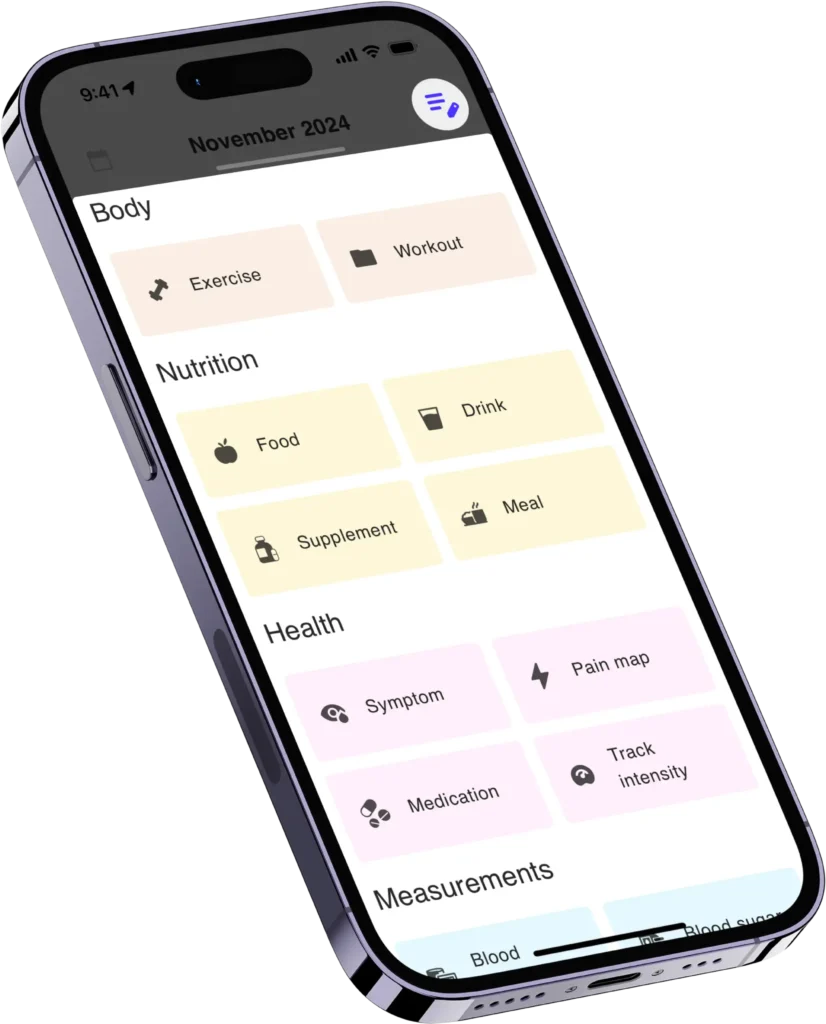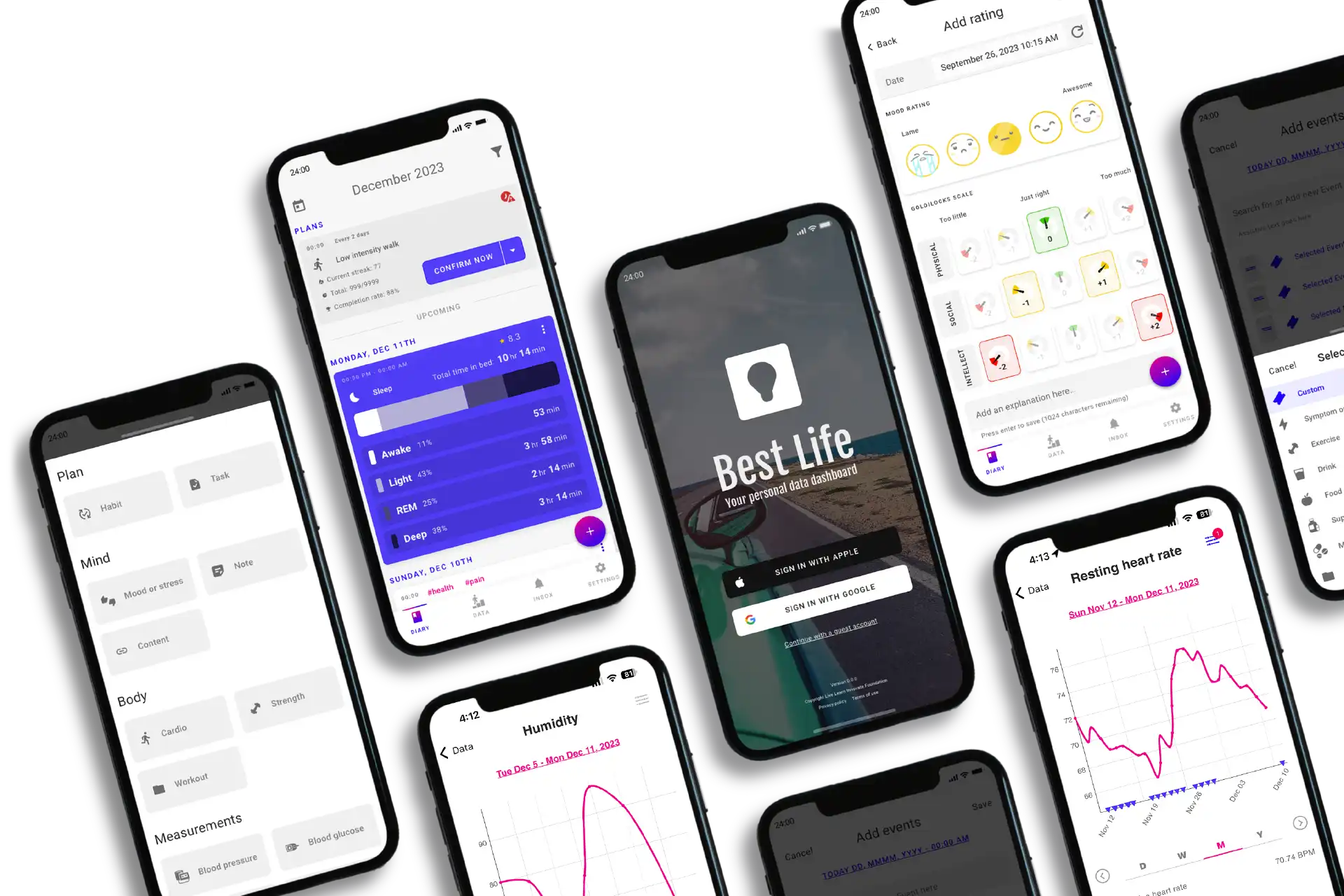Introduction
Wondering what to track in your health tracker app? Let’s make it simple! You don’t need to track everything at once. Start with one or two things that interest you most. As you get used to it, you can add more if you want. The goal is to learn about your health and make choices that help you feel great!
Why does health tracking matter?
Health tracking offers a powerful approach to understanding your personal wellness. By keep up with key symptoms and metrics, you gain insights that transform how you manage your health. You can observe subtle patterns – like how exercise impacts sleep quality or how your environment affects your symptoms.
The primary benefit of health tracking is proactive management. Instead of waiting for health problems to emerge, you can catch potential issues early by watching changes in variables like heart rate or sleep patterns. This approach shifts healthcare from reactive to preventative.
Tracking also provides motivation through tangible progress. Seeing improvements in daily steps, exercise duration, or consistent healthy habits creates positive reinforcement. You become an active participant in your wellness journey, understanding your body’s unique signals and responses.
Most importantly, health tracking is not about achieving perfection. It’s about learning what makes you feel your best. By collecting and analyzing personal health data, you gain a comprehensive view of your physical and mental well-being, empowering you to make informed lifestyle choices.
What should I track in a health tracker app?

When starting health tracking, focus on a few key metrics rather than trying to track everything. Choose simple, meaningful indicators that are easy to record consistently and align with your personal health goals. The most effective tracking is manageable and provides clear, actionable insights.
Start with a question about your health, and what you should track will come to you easier. You may wonder what causes your headaches on certain days but not others or do your dreams impact your emotions the following day. From there you will track headaches as a symptom, or make a note about your dreams and track your daily mood after.
There are lots of things you can keep an eye on, but here are some of the most important ones:
Physical health variables
Tracking physical health has gotten a lot easier with all the smart wearables on the market. Chances are, you are already tracking certain things just by having a smartphone, too.
- Steps
- Exercise
- Heart rate (active and resting)
- Water
- Food (and drinks)
- Sleep
- Symptoms and pain
- Medications and treatments
The Best Life app will sync data from Android Health Connect (previously called Google Fit) and Apple Health. Anything that syncs data to Android and Apple will be able to sync into Best Life. This includes the primary physical health variables like steps, heart rate, and sleep.
Mental health variables
Tracking mental health has become more popular over time, especially with the easily accessible mood tracker apps available for free. Here are some ideas for what to track regarding mental health:
- Overall daily mood
- Momentary emotions
- Stress (good and bad stress)
- Energy
- Dreams
- Medications and treatments
You can track your overall mood, more detailed emotions, and types of stress in the Best Life app. Choose from standard emotions and stress types or create your own! This health tracker app is yours to customize.
Environmental variables like weather, air, and pollen
Often, there are variables outside of your body and mind that impact your health. These types of things can range from weather to pollen. By enabling location services in the Best Life app, you’ll get data on your local environment that you can then use to compare to your logged data.
These weather variables include: air quality, barometric pressure, carbon monoxide, cloud cover, humidity, nitrogen dioxide, ozone, particulate matter, pollen (grass, tree, and weed), precipitation, temperature, sulfur dioxide, UV index, and wind speed.
Remember, you don’t have to track everything at once. Start with one or two things that interest you most. As you get used to it, you can add more to your health tracker app as you see fit.
Tracking these things can help you see patterns. Maybe you notice you feel grumpy when you don’t sleep enough, or you have more energy when you eat breakfast. These little discoveries can help you make choices that make you feel great!
Get the most out of your health tracker app
Now that you know what to track, let’s talk about how to do it well. It’s not hard to dive into a health tracker app but there are a few things that help you get the most out of your effort.
Consistency
Try to use your health tracker app every day, even if it’s just for one small thing. You can set up your Best Life health tracker app to send you reminders (we call them Plans) based on what you are tracking. This helps keep you active in your health as well as give the app enough data to analyze correlations.
Honesty
This is YOUR data. You need to be honest with yourself. No one is going to come at you and judge you for what you put into your health tracker app. The more honest you are in your data input, the better the data output will be that helps you improve your decision-making around your health.
Reviewing your data
Every week, take a quick look at what you’ve tracked. You might notice cool things about yourself! The Best Life app will send you weekly trend analysis, too. So even if you don’t want to go through your data graphs and see what’s associated with one another, our algorithm will send you a message when it’s run an analysis and make it easier for you.
Talk to your health care provider
If you notice something unusual in your tracking, don’t worry! Just show your care provider at your next check-up. This data is meant to back you up in times of discussion and reduce the intangible aspects of explaining your symptoms to your health care providers.
Remember, health tracking is about helping you feel your best. It shouldn’t feel like a chore. If it does, take a break or try tracking something different. The most important thing is to integrate these habits into your daily life in ways that aren’t annoying!
Conclusion
Wow! We’ve learned a lot about health tracker apps. Let’s wrap it up with some key points:
- Health tracking is like having a superpower. It helps you see things about your body you might miss.
- You can track lots of stuff – from steps to sleep to how you feel each day.
- Start small and make it easy. Pick one or two things to track at first.
- Be consistent, but don’t worry if you miss a day.
- Look for patterns in your tracking. You might discover cool things about yourself!
Remember, the goal of health tracking isn’t to be perfect. It’s about learning what makes you feel your best. Maybe you’ll find out that you’re happier when you get enough sleep, or that you have more energy when you drink plenty of water.
Every person is different, and that’s what makes health tracking so exciting. You’re on a journey to discover what works best for you. And the best part? You’re in charge!
So, are you ready to start your health tracking adventure? Pick one thing you want to track and give it a try. You might be surprised at what you learn about yourself!Happy tracking, health detectives!
Still not sure what to track?
Get in touch with us and we’ll help you decide!

